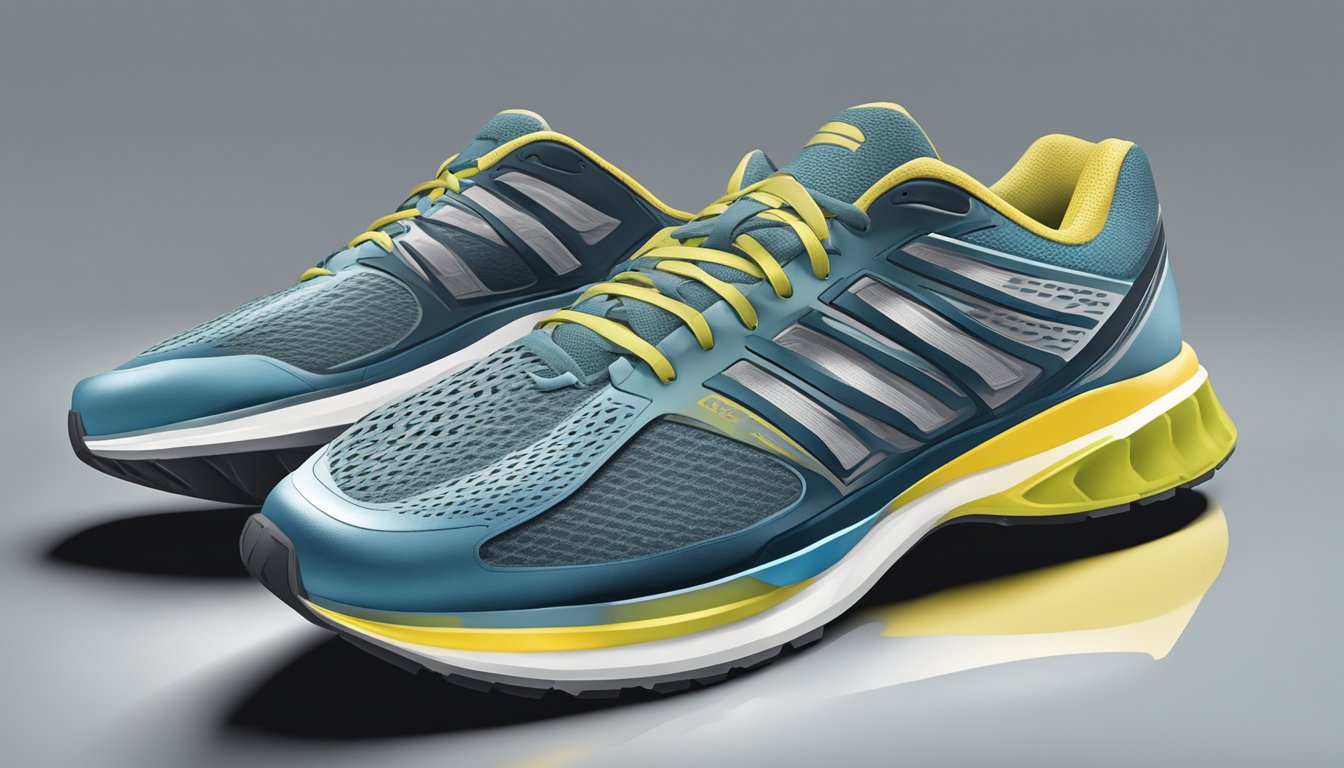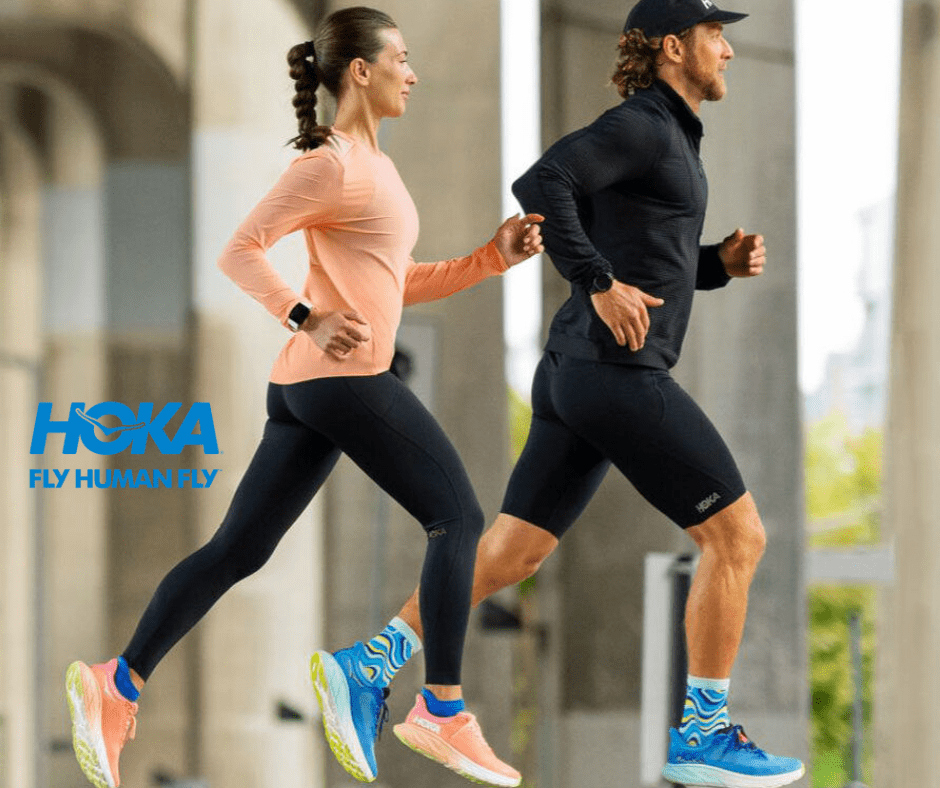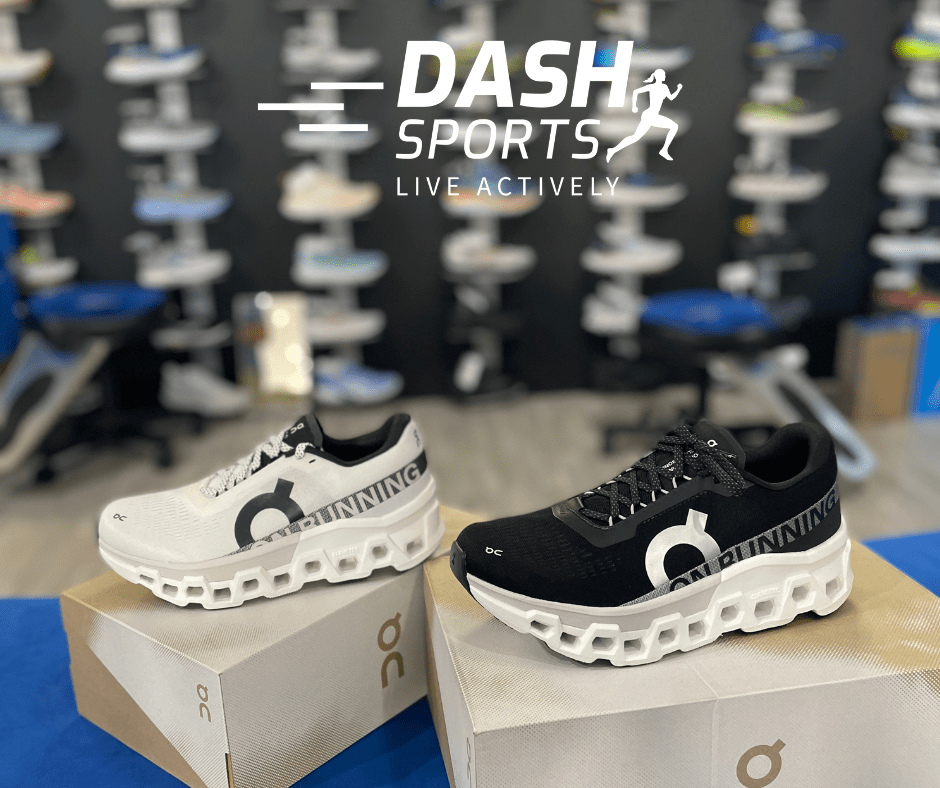Pronation is how your foot rolls inward when you walk or run, a normal part of the gait cycle. Understanding how your feet move is important when choosing the right running shoes and preventing injury. Three main pronation types exist: underpronation (supination), neutral pronation, and overpronation. Each type requires specific shoe features to support your feet correctly.
Understanding your pronation type is not just about comfort. It’s also a matter of health. Improper footwear can lead to running injuries, as the feet are the foundation for most athletic movements. Specialty running stores offer analysis of your gait, and advanced footwear technologies are designed to accommodate different pronation types, enhancing comfort and stability. Maintaining your running shoes and employing proper training techniques to promote foot health and improve your running experience is crucial.
- Explore Our Store Today
Experience the unique Dash Sports approach with our tailored shoe fitting service.
Key Takeaways
- Pronation is critical in selecting appropriate running shoes.
- Identifying your pronation type can reduce the risk of running injuries.
- Advanced footwear technologies and expert advice enhance comfort and stability.
Understanding Pronation
Pronation is a natural part of the gait cycle that involves the inward rolling of your foot upon landing. It’s essential for shock absorption and forward propulsion.
Types of Pronation
- Neutral Pronation: Occurs when your foot experiences a healthy level of inward rolling—about 15 percent—allowing for effective shock absorption.
- Overpronation: When your foot rolls inward more than the optimal level, often resulting in increased stress on the inside of the foot.
- Underpronation (Supination): Characterized by an insufficient inward roll of the foot, leading to a large concentration of stress on the outer edge.
Your foot type often determines your pronation, with flat feet commonly associated with overpronation and high arches with supination.
Importance of Pronation in Running
Correct pronation alignment is crucial for runners, as it helps to distribute the forces of impact evenly. It also influences the type of running shoes you need to prevent injury and optimize performance.
- Runners with neutral pronation often require shoes that offer moderate support.
- Overpronators tend to benefit from stability shoes designed to correct excessive inward roll.
- Those with supination may need shoes with more cushioning to compensate for their lack of natural shock absorption.
Understanding your pronation type can lead to better footwear choices and a more comfortable running experience.
Identifying Your Pronation Type
Before selecting footwear suitable for your running or walking, it’s crucial to understand your unique pronation type. Pronation is about how your foot rolls inward when you walk or run, and identifying your pronation type is key for comfort and injury prevention.
Pronation Test Methods
Footprint Test: One simple method is the wet test, where you wet your foot, step on a piece of paper, and observe the footprint. A full print indicates overpronation, a normal arch suggests neutral pronation, and a high arch indicates underpronation.
DIY Methods: You can also perform a self-assessment by standing in front of a mirror and observing how your ankles and arches behave as you squat.
Analyzing Wear Patterns
Shoe Inspection: Look at the soles of your well-worn shoes. Overpronators will see more wear on the inside edge. Neutral pronators display even wear throughout. Underpronators—also known as supinators—will notice wear on the outer edge.
- Inner Edge Wear: Suggests overpronation.
- Even Sole Wear: Indicates neutral pronation.
- Outer Edge Wear: Points to underpronation.
Professional Gait Analysis
In-store Assessment: Many running specialty stores offer a professional gait analysis. This analysis often includes observing your stride and sometimes a video gait analysis to offer a precise pronation assessment.
Medical Analysis: For the most detailed analysis, consult a podiatrist or a physical therapist who can provide insights into gait peculiarities and recommend the best footwear or orthotics.
Shoe Selection for Pronation
When addressing pronation issues in your running routine, selecting the right shoe type is crucial. Whether you overpronate, underpronate, or have a neutral gait, there is a specific shoe design tailored to provide the appropriate support and enhance your running performance.
Best Shoes for Overpronators
If you’re an overpronator, your feet roll inward excessively after landing, which can lead to increased stress on your ankles and knees. Stability shoes are designed for you as they include features like medial posts or dual-density foams to counteract overpronation. Typically, brands like Hoka incorporate advanced technologies in their stability shoes to improve motion control and provide the necessary arch support.
Options for Underpronators and Supinators
For those who underpronate or supinate, your feet roll outward when running, which can cause wear primarily on the outer edge of your shoes. You’ll benefit from cushioned shoes as they encourage natural foot movement and tend to have a softer midsole to mitigate the impact – essential for your high arches that don’t absorb shock effectively.
Neutral Runners and Shoe Choices
As a neutral runner, you demonstrate an even foot motion with minimal rolling, resulting in less need for corrective support. Your ideal shoe is a neutral shoe, offering a balance of cushioning and flexibility without the added support structures of stability or motion control shoes. This allows for comfortable and efficient strides throughout your runs.
Pronation and Running Injuries
When your foot makes contact with the ground during running, it rolls inward to absorb the impact. This movement, known as pronation, is normal, but excessive pronation can lead to a higher risk of running injuries. Understanding the relationship between pronation and injuries is crucial to keeping your running routine free of setbacks.
Common Injuries Linked to Pronation
Excessive inward rolling of the foot, or overpronation, can strain various parts of the lower extremity. Shin splints are a common issue involving pain along the inner edge of your shinbone. Plantar fasciitis, characterized by a sharp pain in the bottom of your foot, is often attributed to abnormal pronation altering the foot’s natural impact during a run.
Other injuries linked to pronation include:
- Bunions: These bony bumps form at the base of your big toe and can be exacerbated by pressure from overpronation.
- Heel spurs: These growths on the underside of your heel bone can result from long-term stress on foot muscles and ligaments.
- Achilles tendonitis: Overpronation can put extra strain on the Achilles tendon, increasing the risk of inflammation.
Preventing and Managing Injuries
To prevent and manage injuries related to pronation:
- Choose the right footwear: Running shoes that provide stability or motion control can be effective in managing overpronation.
- Consider orthotics: Custom orthotics or over-the-counter inserts can help correct your foot’s mechanics.
- Strengthen your foot and ankle: Exercises that build strength and flexibility can reduce the risk of injuries caused by pronation.
Remember, if you experience persistent pain even after taking preventive measures, it’s essential to consult a specialist. In particular, a podiatrist can provide a thorough analysis and suggest appropriate interventions.
Specialist Advice and Services
Special specialized advice is crucial when selecting the right shoes to accommodate your pronation type. A podiatrist’s expertise can ensure your foot health, while running stores provide specialized fitting services that can significantly impact your running experience.
When to See a Podiatrist
If you experience consistent foot pain or have concerns about your gait and pronation, it’s time to consult a podiatrist. These foot specialists can assess your feet and prescribe orthotics or recommend the right type of shoes to support your pronation type. Additionally, if you’re dealing with injuries such as plantar fasciitis or shin splints, a podiatrist can provide valuable medical advice and treatment options.
Running Stores and Fitting Services
Visiting a running store can be highly beneficial for both novice and seasoned runners. Trained staff members offer fitting services that determine the best shoe for your running style. For instance, a Hoka store usually provides product advice and special services to ensure you leave with a shoe that fits well and caters to your needs. Proper shoe fitting involves more than just checking the size; it includes analyzing your foot’s arch, stride, and pronation to find the optimal footwear.
By leveraging the knowledge from specialist services and utilizing the fitting expertise of a running store, you can enhance your running experience and mitigate the risk of injury.
- Explore Our Store Today
Experience the unique Dash Sports approach with our tailored shoe fitting service.
Enhancing Running Comfort and Stability
When you set out for a run, the shoes on your feet can make a significant difference in how you feel during and after your exercise. Proper cushioning absorbs impact, while tailored stability features work to align your stride. Here’s how the right shoe technology can enhance both comfort and stability in your run.
Importance of Proper Cushioning
Cushioning in running shoes plays a crucial role in protecting your feet from the repetitive impact of hitting the ground. Midsoles that feature structured cushioning provide a balance of softness and support, which can reduce stress on your joints. For example, Fresh Foam technology, as seen in the New Balance Fresh Foam X 860 series, offers a plush yet stable ride that adapts to your unique footfall.
- Types of Cushioning Material:
- EVA (Ethylene Vinyl Acetate)
- Polyurethane
- TPU (Thermoplastic Polyurethane)
Stability and Support Benefits
Stability and support are essential for those who experience overpronation—where your foot rolls inward excessively during your running gait. Shoes crafted for stability, such as the HOKA Arahi 6 Stability Running Sneaker, often include guide rails or a medial post to provide extra control. This additional support helps distribute weight more evenly and maintain proper alignment, enhancing your overall running comfort and preventing injuries.
- Key Stability Features:
- Medial post or dual-density foam
- Guide rails for motion control
- Reinforced heel counters
By choosing running shoes that deliver proper cushioning and support, you can enjoy a more comfortable and stable run that leaves your feet feeling good mile after mile.
Advanced Footwear Technologies
When choosing running shoes, it’s important to understand how advanced footwear technologies can influence pronation control and your overall running experience. These innovations are designed to enhance stability, support, and comfort during your runs.
Midsole Innovations
Midsole developments have revolutionized how shoes manage shock absorption and stability. Materials like ethylene-vinyl acetate (EVA) are commonly used for their balance between cushioning and responsiveness. When you stride on a treadmill or pavement, these advancements ensure that ground contact is less jarring and the push-off phase of your gait cycle is more efficient. For example, Advanced Footwear Technology (AFT) may include features that offer both energy return and motion control.
Shoe Tread and Terrain Adaptation
Your shoes’ tread plays a crucial role in how well they adapt to different terrains. Innovations in tread design allow for a reliable grip on both wet and dry surfaces, contributing to safe and effective running regardless of the weather or terrain. This is vital for pronation management, as adequate traction can prevent the foot from abnormal rolling during ground contact.
Custom Orthotics and Insoles
Custom-fit orthotics and insoles are designed to support the natural shape of your foot, enhancing comfort and correcting imbalances. Technologies such as 3D foot mapping tailor these inserts specifically to your foot’s profile, providing targeted support where it’s needed most. Using precise measurements, manufacturers create insoles that help distribute pressure evenly across your foot, potentially reducing pronation-related stress on your joints during runs.
Maintaining Running Shoes

When it comes to running shoes, understanding wear patterns and knowing when to replace them can prevent injury and improve your running experience. Ensuring you get the most out of your shoes while being mindful of their condition is key.
Assessing Shoe Wear and Replacement
Shoe Wear Pattern:
- Inspect the soles: Look for areas of high wear, such as the heel or the ball of the foot. Overpronators often see accelerated wear on the inner side of the shoe, while underpronators might notice more wear on the outer edge.
- Check the midsole: Press into the midsole with your thumb. If it feels hard or unyielding, it’s likely worn out and not providing enough cushioning.
- The Wear Test: Try the twist test; hold your shoe at both ends and twist. A stable, fresh shoe won’t twist easily. If it does, it’s a sign of wear.
Replacement:
- Your running shoes should be replaced every 300-500 miles. However, listen to your body – if you experience discomfort or pain, it might be time to recommend shoes that better suit your pronation pattern.
Optimizing Shoe Life
- Rotate between pairs: If you run frequently, use at least two pairs of running shoes and alternate them to reduce stress on a single pair.
- Proper storage: Keep your shoes in a cool, dry place and avoid leaving them in extreme temperatures, which can degrade the materials.
- Use as intended: Running shoes are designed for running, not for other sports or activities, which can wear them out faster or alter the wear pattern.
By staying attentive to shoe wear and caring properly for your shoes, you’ll maximize their lifespan and your running performance.
Training Techniques and Foot Health
Proper training techniques can mitigate common issues, such as ankle strain, while understanding your foot health—like knowing if you have low arches or if you’re an overpronator—is crucial in selecting the right footwear and avoiding injuries.
Exercises for Foot Strength
To enhance your foot strength and offset risks of conditions like arch collapse or overpronation, consider the following routine:
- Toe presses: Use your big toe and second toe to grip the ground, hold for a count of five, then release. Repeat for 20 reps to build strength, which is crucial for maintaining a neutral foot type.
- Heel raises: Lift both heels off the ground, rising onto your toes. Hold for three seconds, then lower slowly. Aim for three sets of 15 to encourage ankle stability and support standing foot posture.
Running Form and Technique
The key to efficient running form lies in the particularities of your running style and foot posture. Remember these tips as guidelines:
- Running style: Aim for a stride that’s comfortable and supports a neutral runner profile. Pay attention to overpronators and underpronators who may need specialized exercises or footwear.
- Arch height management: Whether you have high arches or low arches, ensure that your arches do not collapse by keeping your foot strikes even and aligned. This can prevent unnecessary strain on your ankles.
- Neutral foot position: Work towards maintaining a neutral foot position while running. This avoids undue pressure on any one part of the foot and promotes better alignment.
Focusing on strength-building exercises for your feet and refining your running form reduces the risk of injury and improves your overall running efficacy.
Personalized Experience in Running Stores
When you visit a running store, you’re not just shopping for shoes. You’re embarking on a journey to improve your running performance and comfort through services that cater specifically to your needs.
3D Foot Mapping and Analysis
At the forefront of personalization in running stores is 3D foot mapping and analysis. A trained staff member will guide you through this process to capture intricate details of your feet. Using advanced technology, this analysis provides a comprehensive view of your foot mechanics, which is essential for selecting the perfect pair of running shoes.
- 3D Insight: Captures your foot’s length, width, and arch type.
- Pressure Points: Identifies pressure distribution and potential hot spots.
- Gait Analysis: Assess your walking or running stride.
This data reveals if specific shoe features could enhance your comfort and performance.
Expertise and Customer Care
The backbone of a running store is its trained staff members, who combine their expertise with special services to offer a personalized experience. Whether you need help understanding your 3D analysis results or you’re seeking advice on improving your run, these experts are there to support your goals.
- Running Knowledge: Staff are typically runners themselves, offering insights drawn from experience.
- Shoe Recommendations: Based on analysis results and personal running conditions.
- Custom Fittings: Experts ensure shoes are an ideal match for your foot type and running style.
A personalized fitting session with a trained staff member offers more than just a shoe purchase; it’s an investment in how comfortably and efficiently you run.
Understanding the Gait Cycle
Your walking or running motion is described by the gait cycle, and understanding it is crucial for identifying how pronation affects your foot health and choice of footwear.
Phases of the Gait Cycle
The gait cycle consists of two primary phases: the stance phase and the swing phase. During the stance phase, your foot is in contact with the ground and accounts for about 60% of the gait cycle.
It’s subdivided further into initial contact, loading response, mid-stance, terminal stance, and pre-swing. The swing phase follows, comprising the remaining 40% of the cycle, moving through the initial swing, mid-swing, and terminal swing stages.
Footstrike and Pronation Dynamics
Footstrike refers to the manner in which your foot contacts the ground. It signals the beginning of the gait cycle. There are three types of footstrike based on where your foot first strikes the ground: the heel (rearfoot strike), the ball (forefoot strike), and the midfoot strike. During normal pronation, your foot naturally rolls inward to promote shock absorption.
However, if yours rolls too much towards the medial side, it’s termed severe overpronation, which can lead to alignment issues and injuries. Conversely, underpronation (or supination) occurs when there’s insufficient inward roll of the foot on the lateral side after landing. This knowledge can help you select the right footwear to support proper pronation dynamics during your gait cycle.
Shoe Features and Pronation Control
Choosing the right shoe features can significantly influence your pronation control during running. Key components like stability, cushioning, and medial support work together to ensure proper foot alignment and comfort.
Stability Running Shoes Features
Stability running shoes are designed to prevent excessive inward rolling of the foot, known as overpronation. They typically include features such as:
- A firm midsole – Provides support to stop the arch from collapsing.
- Dual-density foam – Slows down pronation with a harder foam on the medial side.
For example, updated guides on stability shoes explain the importance of these features in detail.
Cushioning and Shock Absorption
Cushioning in running shoes serves to protect your feet from the impact of hitting the ground. Effective shock absorption is crucial to prevent injuries and provide a comfortable ride. Look for:
- EVA or gel materials – These are typically used to absorb shock and reduce the impact on your joints.
- Placement of cushioning – Usually in the heel and forefoot area to aid in even shock distribution.
Medial Support Technologies
Medial support is essential for correcting overpronation. Shoes with this technology have:
- Medial posts or guidance rails – These firm sections are implemented to increase stability and control excessive inward motion.
- Arch support features – They are strategically placed to facilitate natural foot movement.
Learning about medial support and its effects could help you choose better footwear to suit your needs.
- Explore Our Store Today
Experience the unique Dash Sports approach with our tailored shoe fitting service.
Options Beyond Traditional Running Shoes
When you encounter issues with foot pronation, it’s important to explore options beyond standard running shoes. Innovative alternative footwear and customization options can reduce injury risk and provide the tailored support your feet require.
Alternative Footwear for Pronation Issues
Minimalist Shoes or Barefoot Running: You can minimize overpronation by strengthening your foot’s natural structure. Minimalist shoes, with less cushioning and a smaller heel-to-toe drop, encourage a more natural foot strike. As noted by Outside Online, this shift can enhance your foot’s ability to absorb impact, potentially reducing the need for conventional motion-control features.
Orthopedic Sandals: These are designed with arch support and cushioning to aid foot alignment and mitigate pronation issues. The open design also allows for a more natural foot expansion during your stride.
Customization and Adjustment
Custom Orthotics: Custom orthotics are personalized for your feet and can be inserted into your footwear for optimal pronation control. These are especially valuable if you have a pronounced foot structure that doesn’t fit well with over-the-counter options.
Shoe Modifications: Adjust the existing structure of your shoes for a better fit and increased pronation control. Heel wedges and flared soles on running shoes can be added for this purpose. Be aware that improper adjustments could increase injury risk, so it’s best to consult with a professional.
In exploring these options, remember that each foot is unique, and what works for one person may not be ideal for another. Properly addressing foot pronation can significantly impact your comfort and performance, so take the time to find what suits your needs the best.
Practical Tips for Runners
Before you hit the trail or the track, choosing the right footwear is crucial. The right pair of running shoes can make all the difference in your comfort, stability, and performance.
Choosing the Right Running Store
When you’re hunting for the perfect running shoes, visit a specialized running store. A reputable store will offer a comprehensive fitting process and personalized product advice catering to your needs. Look for a store where staff members are experienced runners; they’ll understand the importance of proper shoe fit and can provide insights into stability and comfort specific to the runner’s biomechanics.
Evaluating Running Shoe Options
Once in the store, an in-depth assessment of your pronation is key. Pronation refers to how your foot rolls inward as you run, which affects the type of support you’ll need.
- Stability running shoes are tailored for those with mild overpronation.
- Runners with severe overpronation may require motion-control shoes.
Comfort is non-negotiable, so take time to try different options and walk or jog in them if possible. Trust your feelings of comfort and expert guidance to choose a running shoe that supports your running goals.
Long-Term Foot Health

Maintaining optimal foot health is essential, especially if you’re managing pronation-related issues in your activities. Targeted prevention strategies and attention to posture and alignment can significantly improve your foot health and overall running form.
Preventative Strategies for Pronation-Related Issues
To protect your feet over the long term, it’s important to implement preventive measures:
- Select proper footwear: Shoes that provide appropriate support, especially if you experience overpronation, can prevent strain on your foot’s arch.
- Incorporate orthotics: Customized or over-the-counter orthotics can improve normal pronation and shock absorption, reducing the risk of injury.
Posture and Alignment in Running
Your running form is critical to your long-term foot health. A focus on posture and alignment can prevent pronation-related issues:
- Stay aware of your running form: Ensure your body is in a neutral, upright position, with a slight lean forward from the ankles, not the waist.
- Strengthen your core and leg muscles: Strong muscles contribute to stable alignment and can alleviate undue stress on your feet during impact.
Frequently Asked Questions
Understanding shoe pronation is crucial in selecting the right footwear for your needs. Here, we address common queries to help you make informed decisions about pronation and the shoes that best support it.
What type of footwear is recommended for individuals with overpronation?
For those with overpronation, stabilizing shoes designed to reduce excessive inward rolling of the foot are recommended. These often feature structured cushioning and support to facilitate proper alignment during movement.
How can I assess my pronation level at home?
You can assess your pronation level at home by examining the wear pattern on the soles of your shoes. Excessive wear on the inside indicates overpronation. You may also observe your feet while walking or do a wet foot test to see the footprint’s arch.
What features should I look for in running shoes to accommodate overpronation?
When looking for running shoes for overpronation, consider features like medial support to prevent excessive inward motion, a firm midsole to distribute impact, and a durable, supportive heel counter to maintain foot alignment.
Can women’s pronation issues differ from men’s, and how?
Women’s pronation issues can differ due to biomechanical differences, such as wider hips influencing gait. Women may require shoes with a different design focusing on the specific support and alignment tailored to these differences.
Is it possible to correct overpronation, and which types of shoes help with this?
While overpronation itself cannot be fully corrected, its effects can be managed with the right footwear. Motion control shoes are particularly helpful, providing maximum support and control to keep the foot in alignment.
What are the long-term effects of walking with improper pronation, and how can the right shoes help?
Long-term effects of improper pronation include increased risk of injury, joint pain, and muscle strain. The right shoes can mitigate these risks by ensuring proper foot mechanics, supporting the arch, and distributing impact evenly.





